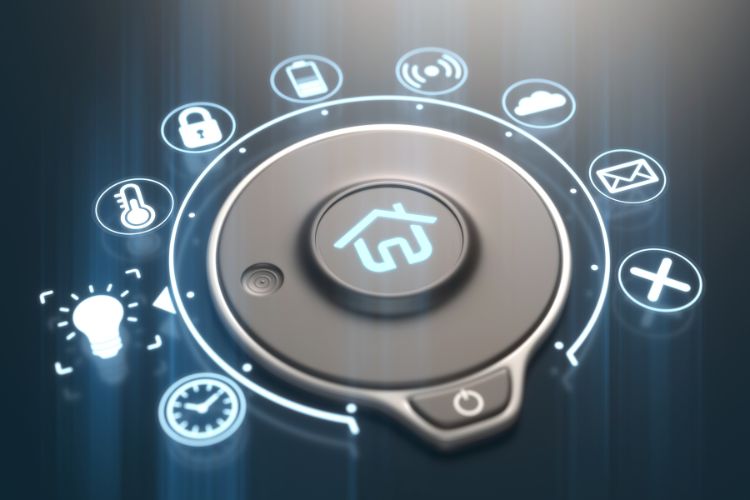The term “smart” as used in “Smart Home” and “Smart Building” is often a replacement for “connected.” The expansion of connectivity brought about due to the IoT (Internet of things) has increased the dependency on individual modules being available at all times. The connected home can be compared to a string of holiday lights: In one version, if one bulb burns out, the string goes dark. Using parallel wiring allows the string to keep burning brightly even if individual bulbs fail. The challenge with the smart building is to know which approach is best.
The IoT is being implemented in a wide variety of situations, not always carefully. This includes consumer smart home device adoption and IoT in industrial and business settings. Sensors and devices capture data and perform tasks, communicate over IP (Internet Protocol) and other protocols with cloud or local systems to create intelligent systems and enable automation. These solutions enable more functionality in what can be generalized as smart spaces.
Parks Associates, a woman-owned and woman-led market research and consulting company, defines “smart spaces” as physical locations, equipped with networked devices and sensor-based solutions, that give individuals data about the location’s parameters and how the space is being used. Smart spaces are most commonly thought of as buildings, but may be any location, including outdoor areas or vehicles.
Smart spaces have a strong relationship with industrial IoT, making use of the same concept of networked sensors feeding into larger data platforms. Industry 4.0, for example, refers to the fourth industrial revolution in which digitalized industrial processes, through the use of IoT technologies and cyberphysical systems, provide businesses with new levels of visibility and control, allowing them to collect and analyze data, optimize operations and logistics, and automate processes and decision-making.
The demand and growth of IoT edge solutions in smart buildings and smart spaces continues to grow driven by smart apartments, retail, warehousing, hospitality, and building management. Common challenges and best practices in deploying solutions into these environments are a challenge, especially as new open solutions are compatible with many different networking technologies, such as the use of gateways with both Wi-Fi and new IoT radios, which can create, expand, and improve services in these new smart spaces.
As IoT and smart solutions grow, they become even more dependent on connectivity and universal protocols. Proprietary systems are losing market share as the world moves in the direction of networking everything everywhere all the time. Technicians who need to know multiple protocols to connect multiple devices are demanding universally agreed upon methods to connect them and companies that follow that logic will gain market share.
The major networking approach in homes is Wi-Fi and it has seen technical growth over the years that often creates interoperability issues. Most products conform to 802.11g/n and/or 802.11ac wireless standards. Equipment built to the earlier standards, 802.11a/b, has been replaced due to the slow speed of that iteration. The most recent standard, 802.11ax (Wi-Fi 6), was approved in 2019 and is just beginning to be seen in the market. Other wireless technologies, such as Bluetooth and 4G/5G, fulfill specific networking functions.
Parks Associates research finds 50% of smart-home device owners have experienced a recent problem with one or more of their devices, with most problems are related to wireless connectivity. More than one-half of Wi-Fi network owners report some network problem during the last 12 months, including slow speeds and lost connections.
However, consumers tend to downplay their own network issues and report the main reason for smart home returns were “the product did not work as advertised” and they had “difficulty with the physical installation,” indicating more work needs to be done to improve consumer education, setup and installation processes, and product connectivity.
These issues contribute to a high return rate for these devices. Between 2-4% of US Internet households returned at least one smart home device in the past 12 months, which are high return rates when you consider the purchase and adoption rates are still in single or low double digits.
As a result, 13% of consumers report they are not likely to purchase a new product from the same brand if they return a product from that brand. In this early market stage, brands need to build enthusiasm and brand loyalty to continue the drive toward mass market. Smart-home devices often get returned for reasons that have nothing to do with the device itself.
According to Jason Moore, cofounder and CEO, RouteThis. “Aside from the expense these returns create, they can also have a significant impact on customer loyalty. In reality, about half of the issues these devices experience are directly related to the consumer’s home Wi-Fi. So, when it comes to building brand loyalty, smart-home brands first need to consider what they can do to better resolve and assist customers with these issues.”
One approach to improving brand loyalty has been for larger companies to expand their offerings by absorbing niche developers with specific expertise needed to make smart offerings even smarter. Parks Associates research, in the firm’s Smart Home Tracker, finds smart-home mainstays are strengthening their offerings that way. Resideo recently acquired fire and life-safety solutions manufacturer First Alert, Inc., and Crestron acquired intelligent video technology from 1 Beyond.
Brand recognition and trust are important in safety devices, so the Resideo acquisition of First Alert enhances their smart-home offering. They also added the retail relationships and deep expertise in a specific category. Similarly, Crestron added expertise in camera solutions focused on video conferencing. The move brings a wide-ranging line of intelligent video offerings and automated camera tracking to Crestron.
Parks Associates research indicates that the waning pandemic did not fully reverse the massive growth of telework the world experienced during 2020-‘21. The addition of 1 Beyond will help further Crestron’s mission of bringing convenience and comfort to the work-from-home segment via automation.
Want to tweet about this article? Use hashtags #construction #sustainability #IoT #5G #cloud #edge #futureofwork


